Ancient Salona Archaeological Discovery: Peacock Mosaic, Symbol of Eternal Life
January 25, 2022 - Another ancient Salona archaeological discovery reveals a stunning peacock mosaic depicted in early Christian art as a symbol of resurrection and eternal life.
The beautiful ancient mosaics discovered recently in the center of Solin caused a sensation in archeological circles, but also beyond. The probable floor of some Roman villas on the outskirts of Salona may shed new light on the area where the capital of Roman Dalmatia stretched. And not only that, but this is one of the few findings that can show how people lived in Salona, reports T.portal.
Apart from the profession's interest and the work that restorers are currently doing on mosaics, the main issue is the future presentation of one of the critical Salona discoveries in the last few decades. As things stand now, the mosaics will be covered with glass and get a well-deserved place in the future city cultural center, which is why the works that led to the discovery began in that area.
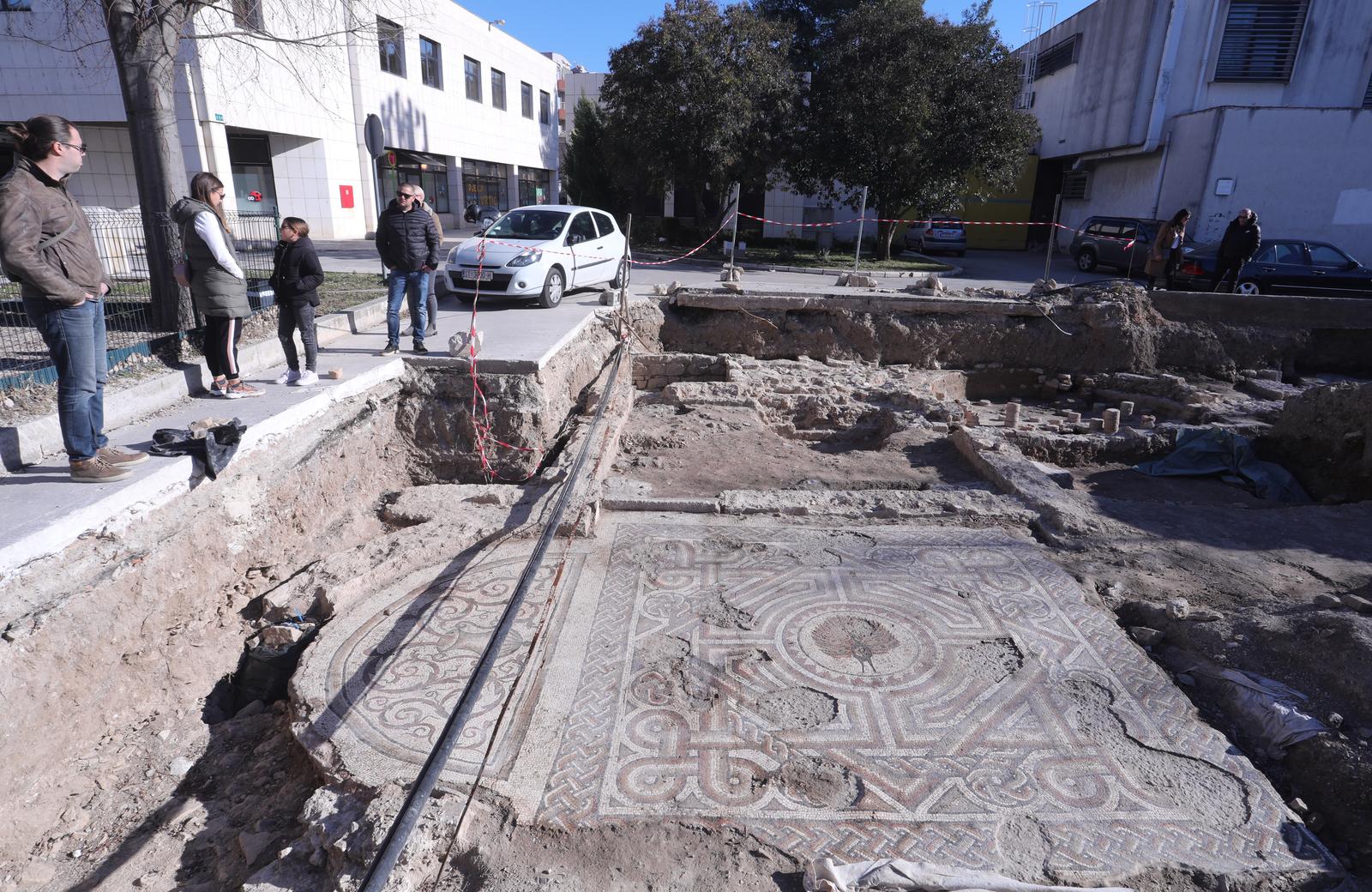
Ivo Cagalj/PIXSELL
With underfloor heating installations and a beautiful small mosaic with flowers, the main discovery is undoubtedly a giant mosaic with more decorative details - an image of a peacock. It may be that the former villa owner, unknown to us today, admired the beauty of this bird. Still, according to some experts, the depiction of a peacock may indicate when the villa was built, i.e., in early Christianity, from the 4th century onwards (Salona was abandoned in the first half of the 7th century). The reason is the significant symbolism of the peacock in the Christian religion.
Peacocks are usually depicted in early Christian art as a symbol of resurrection and eternal life. Such a meaning probably comes from pre-Christian religions, from Greek to Jewish. It was believed that peacock meat did not decay even after death, so they considered it a symbol of eternity. The belief was also passed on to Christians, who portrayed this bird as a sign of Christ's eternal existence. St. Augustine tested this thesis in practice and was surprised at how long the meat remained undigested. In "The State of God," he even wrote about his experiment: "a year later, it remained the same, except that it dried up." These are all reasons why this bird can be seen in catacombs and tombs because it reminds believers of the soul's immortality.
In the Middle Ages, this was supplemented by the fact that the peacock sheds its feathers every year, and new ones grew even more beautifully than before. Legends also said that the beautiful colors of peacock feathers come from food, that is, that a peacock can kill and eat venomous snakes, whose venom 'turns' into miraculous feather colors. It was similar, it was believed then, with Christ: he dies for us on the cross, then rises from the dead by defeating evil by taking divine form, and with healed wounds. It can also be said that the peacock - whose beauty is not always visible - symbolizes a Christian who has attained eternal life by faith and has shown all his greatness by resurrection, just as a peacock spreads its spectacular tail on special occasions. Interestingly, in later times, and even today, the peacock was seen more as a symbol of vanity.
The peacock's tail had another meaning - the 'eyes' at its ends reminded Christians of the God who sees everything. For example, the pillars of Theodosius' Forum in Constantinople, today's Istanbul, were decorated with that part of a peacock's tail.
We can only hope that the announcements about the presentation and (more importantly) preservation of this finding will come true, and that it will not experience the fate of the most famous Salona mosaic, a depiction of two deer drinking water and the inscription 'As a deer longs for a spring of water, so my soul longs, God, for You.' Namely, this mosaic disappeared between the two world wars, and today there are only replicas and paintings.
For more, check out our dedicated lifestyle section.
Archaeological Discovery: Ancient Salona Ramparts Uncovered
January 7, 2022 - Under the layers of earth, vegetation, and garbage, well-preserved ancient Salona ramparts have been discovered.
No one has recently passed Porta Caesarea, the eastern and oldest city gate on the way to the amphitheater, without being surprised by the discovered northern ramparts of Salona, the former metropolis of Roman Dalmatia, reports Slobodna Dalmacija.
Under the layers of earth, vegetation, and garbage, one of the best-preserved parts of the Salonitan rampart, "70 meters long" and "120 meters" in length, has been revived.
This research project began in mid-November last year. It will continue in the next period as there is excellent potential for discoveries and new knowledge about life in ancient Salona.
"This is a continuation of the successful cooperation between the Department of Archeology of the Faculty of Philosophy in Zagreb and the Archaeological Museum in Split, which has been going on for four years now.
The research on these northern ramparts is part of the project "New Lives of Ancient Inscriptions: Epigraphic Spoli in Central Dalmatia", which deals with re-used ancient inscriptions funded by the Croatian Science Foundation. Our goal is to explore this and find ancient inscriptions within that research because we know that they were used extensively in the construction of Salona's defensive walls.
This has been confirmed many times so far because, for the two hundred years that Salona has been researched, there have always been inscriptions that ended up in the ramparts as a building material," explains Dino Demicheli, associate professor at the Department of Archeology and project leader.
"With this campaign, we wanted to discover and present the best-preserved section of the ramparts that can be visually experienced in Salona. It is this move east of the amphitheater, along the northern ramparts.
We knew that there were ramparts and towers here. Still, they were so covered with stones, vegetation, earth, that this view simply could not be experienced, unlike what you can see after three weeks of research," Demicheli explains what they have discovered.
"These towers, which are numbered from 15 to 18 in professional literature, can now be seen very nicely, and our goal is to preserve them as soon as possible, protect them from collapsing and, of course, present them," says the expert, explaining how the construction of this ring of ramparts began in 170 AD, but how the defensive walls were constantly repaired or upgraded after that.
"Here, you can see the ramparts, towers, and these triangular protrusions that were upgraded only in late antiquity; it is the latest phase of construction, the fifth and sixth centuries AD.
All four towers are different in appearance, construction, and size. Nevertheless, these are really impressive remains, and even when you imagine that these towers went another five to six meters in height, you can imagine what the Roman defense system looked like at that time," he adds, emphasizing that it is essential that they confirmed the project goal and found more than 30 epigraphic monuments, i.e., exteriors.
"We have established that epigraphic monuments were used for this extension of the ramparts and that they were mercilessly inserted as construction material from the surrounding area.
These are ancient tombstones, more or less dating between the first and third centuries, and were installed, we assume, during the fourth and fifth centuries.
The ramparts are currently the greatest epigraphic resource in Salona; we find so many of them here that it is fascinating. All the necropolises were outside the city, and the ramparts were being built right on the border between the "living" city and the pagan necropolis outside Salona, which were in some way deconstructed and inserted into the ramparts.
So, in a way, they have been preserved thanks to that," Demicheli points out, saying that they found some fascinating inscriptions.
One of them is an inscription mentioning Vital. He was one of the slaves who took care of the affairs of some very well-to-do Romans.
"At the same time, the archeological research of one of the towers began. By the way, we are now in its lower layers, while the operable part of the tower and ramparts was much higher above us.
We were amazed that along with amphorae and tegulas, we found a lot of ceramics, especially tableware, and increasingly finer pieces. However, now all this needs to be cleaned, washed, determined and defined by century.
We are only in the first layer, so who knows what is down there," says the project manager and points out that it will take time for all this to be methodologically arranged.
Deputy Head of Research Ema Višić Ljubić, senior curator of the Archaeological Museum in Split, emphasizes the importance of cooperating with the Zagreb Department of Archeology and their students. It all started in 2018 with the research of the building with the Episcopal Center and continued with the protective research of the Gradina fortress.
With all the above and current research, we discover new buildings and gain insights about Salona. Most of the knowledge that our predecessors left us in professional literature has been confirmed, and it is incredibly fascinating how many tombstones we have found.
We are delighted because this opens a new story about Salona; we learn a lot about its population and life in it. Nearby is the early Christian site of Kapljuč, which previously had the stage of a pagan cemetery, so a lot of material was built into the ramparts from that site.
Indeed, this complements our knowledge of Salona we have inherited since the beginning of our research," says Višić Ljubić. The project included research associate Ana Demicheli and the Archaeological Museum and senior curator Jagoda Mardešić and Nino Švonja, curator of the epigraphic collection.
"This is the longest stretch of the ramparts that can now be seen from the outside, so only here can the visitor experience the defensive power of Salona with all these towers that are especially dense on the north side of the walls," adds archaeologist Mardešić.
"Mostly there is still work to be done on conservation, on partial reconstruction, but we are very pleased that we have started this process," Mardešić points out.
The importance of the entire campaign is confirmed by Dr. Ante Jurčević, director of the Archaeological Museum.
"The arrangement of the ancient northwestern ramparts began at the end of 2020, removing vegetation but also large debris, mostly of asbestos origin, which was dumped next to the towers in large quantities. Since the towers are next to the central communication, i.e., the road, it was convenient for people to throw garbage there.
After these works, research began, which included towers and cleaning the front walls, and the Archaeological Museum continued to clean the entire area to the amphitheater.
We cleaned about two hundred meters of low vegetation, removed most of the bulky waste from the surface of the towers and ramparts. Our goal is to present the rest of these towers that connect to the amphitheater in the same way by the end of 2022 so that this whole move from Kapljuč to the amphitheater is preserved and presented.
The northwestern ramparts are being arranged with the help of the Croatian Science Foundation, the Ministry of Culture, as well as our museum funds," says the director and announces that they plan to arrange an early Christian cemetery in the second phase of organizing and cleaning the Salona archeological site.
"We intend to conserve and finally arrange the tomb of St. Domnius, and then the Episcopal complex from which we want to remove long-standing accumulations of earth and stone that were formed during 50 years of research. This is followed by research, conservation, and site presentation.
Our goal in cooperation with the Croatian Restoration Institute is to arrange the western necropolis, i.e., the part that is currently underwater, as well as the part of the western ramparts that are also overgrown and are located near the entrance to the INA plant in Sveti Kajo," the director announces numerous projects for an even better presentation of these inexhaustible archeological treasures.
Everyone is incredibly proud that this cooperation with the Faculty of Philosophy in Zagreb revived the student fields that existed in the 60s and 70s when archaeologist Duje Rendić Miočević brought students who researched at Porta Caesarea.
Students of the Department of Archeology who participated in this research are Tomislav Kiš, Santa Duvnjak, Vinko Udiljak, Martin Sokolić, and Nera Janković, as well as two doctoral students on the project of the Croatian Science Foundation, Josip Parat and Krešimir Grbavac.
Everyone will continue to work in the field because their experiences in Salona are significant to them. They were supported by the City of Solin, the Tourist Board, and the Public Institution of Culture "Zvonimir".
"This field is fantastic for them; they, like all of us, are fascinated by the result because a lot has been achieved in a brief period, and what makes us happy are the reactions of people who walk through Salona every day. No man hasn’t stopped and said, 'Well folks, this is fantastic, we didn’t even know this was here!'
However, all this needs to be protected, that is, preserved, so we still have a lot of work to do," concludes Demicheli.
You can see photos and videos at Slobodna Dalmacija
To read more about lifestyle in Croatia, follow TCN's dedicated page.
Dalmatian Duo Revives Ancient Salona in 3D (PHOTOS)
April 18, 2021- Ever wonder how Salona looked all those years ago? One Dalmatian duo has revived ancient Salona in 3D!
Dalmatinski Portal reports that Dalmatian duo Stipan Ujdur from Opuzen and Frane Bilić from Zadar initiated the reconstruction of another Dalmatian Roman geolocation - ancient Salona. Ujdur creates the 3D models, video animation, VR, and photo rendering, while Bilić will program the final visualizations for multimedia in the 'MediaUp' studio.
"The project is very demanding, and it is difficult to do because Salona is large, but very little researched, so only the explored localities will be processed in the scenes. So far, five scenes have been made from a total of 12 to 14," Ujdur said.
"These scenes are more or less researched, so it is possible to model them in 3D format. I hope no one will blame me for some inaccuracies or copyright. Overall, it should be almost by the end of this year at the latest," Ujdur added.
Porta Caesarea was the monumental city gate of Salona. While Salona was still within the framework of the Urbs Vetus, this gate served as the eastern entrance to the city.
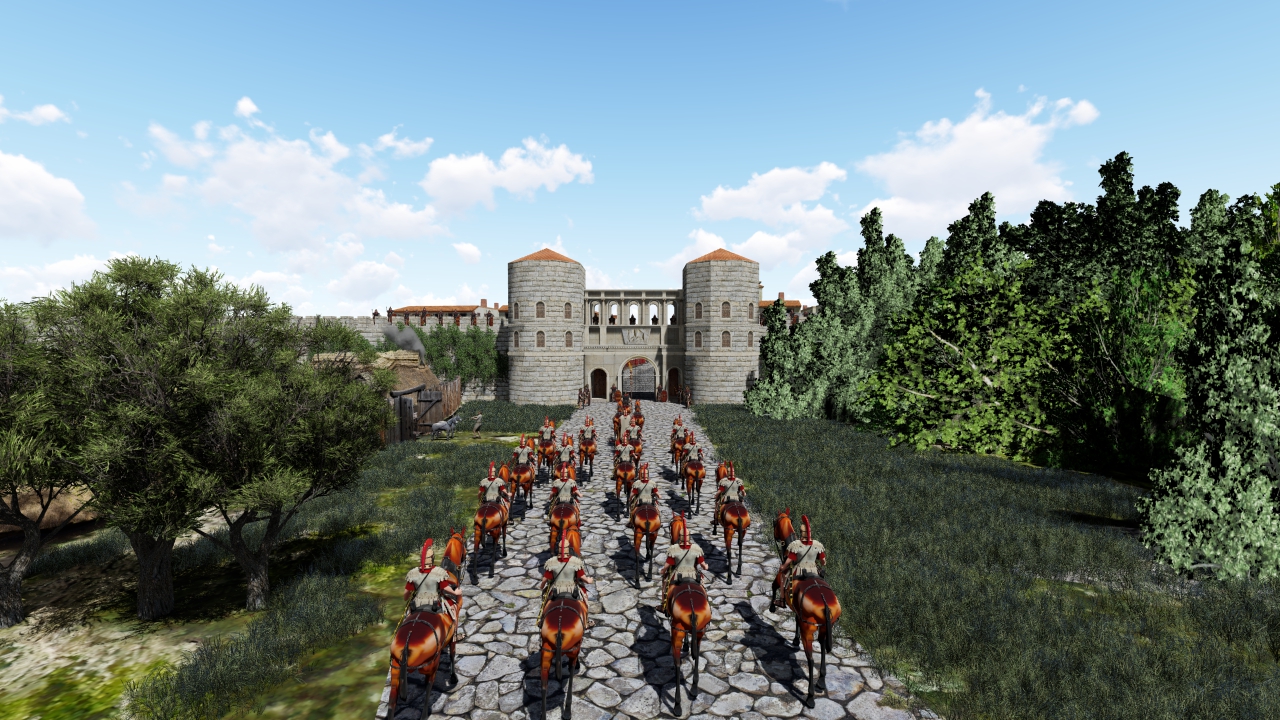
In front of them was a non-Romanesque settlement that depended on works in the city and the sale of agricultural products.
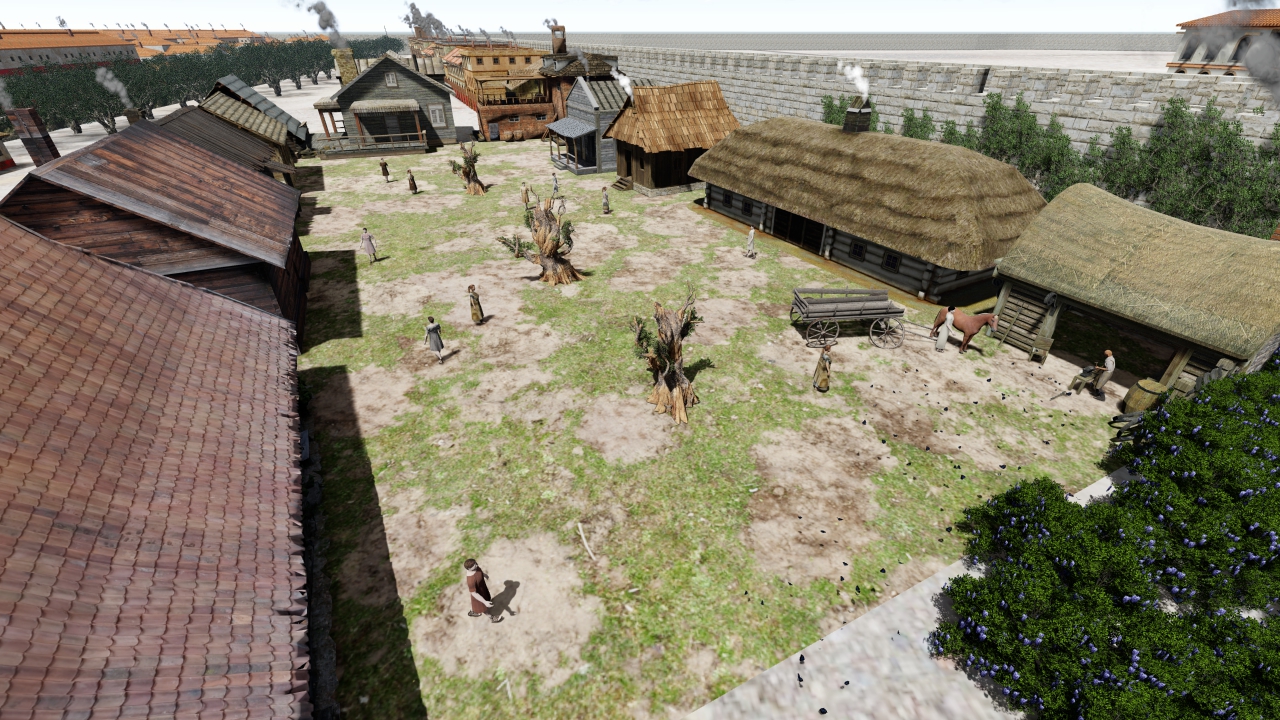
There were significant changes in front of the gates of Porto Caesarea and the ramparts. There are foundations for the city insula district; these are multi-story buildings built by the city for deserving citizens and social cases. They were usually 50 x 25 x 20 meters in size, with different variations in architecture, with public fountains for water and laundry.

On the left, in front of Porta Caesarea, a non-Roman settlement was evicted in front of Porta Andetria, and in their place, a settlement was built for workers in the "industrial zone."

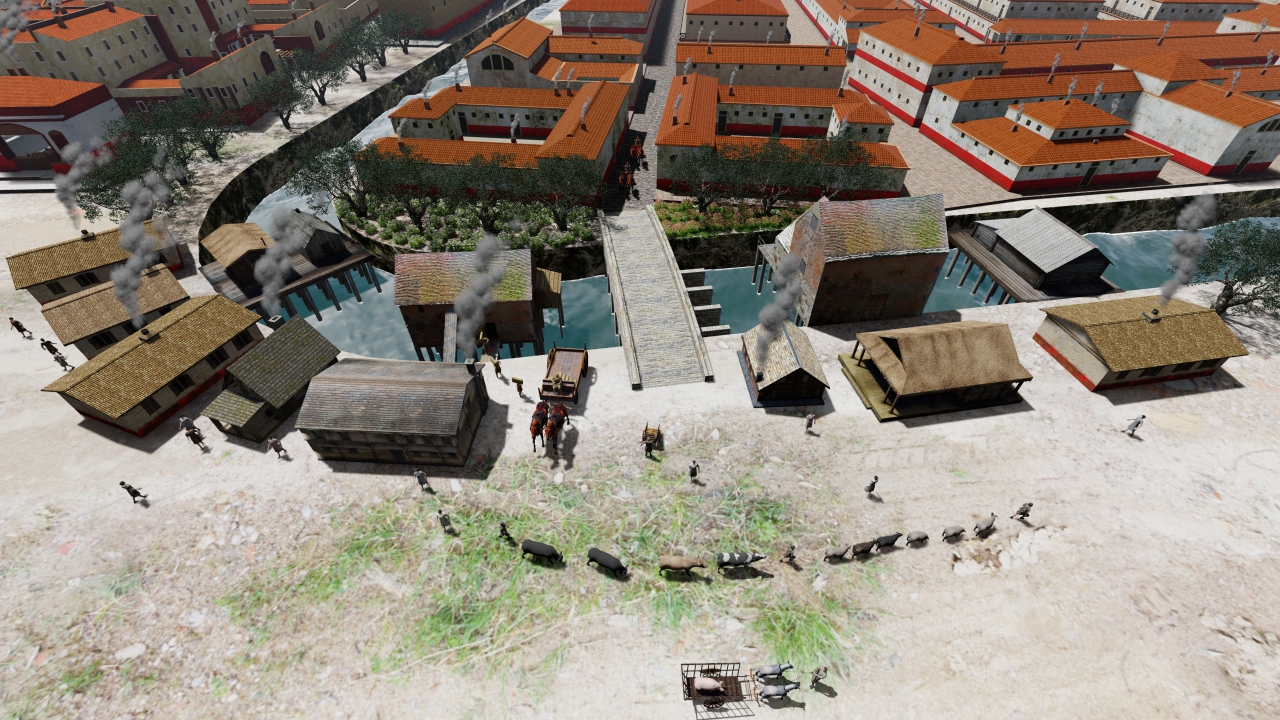
The industrial zone was near the bridge, and numerous workshops, warehouses, and dwellings were built for the workers who worked in them. There were also workshops on poles or with mills that exploited the water potential to power the machines.
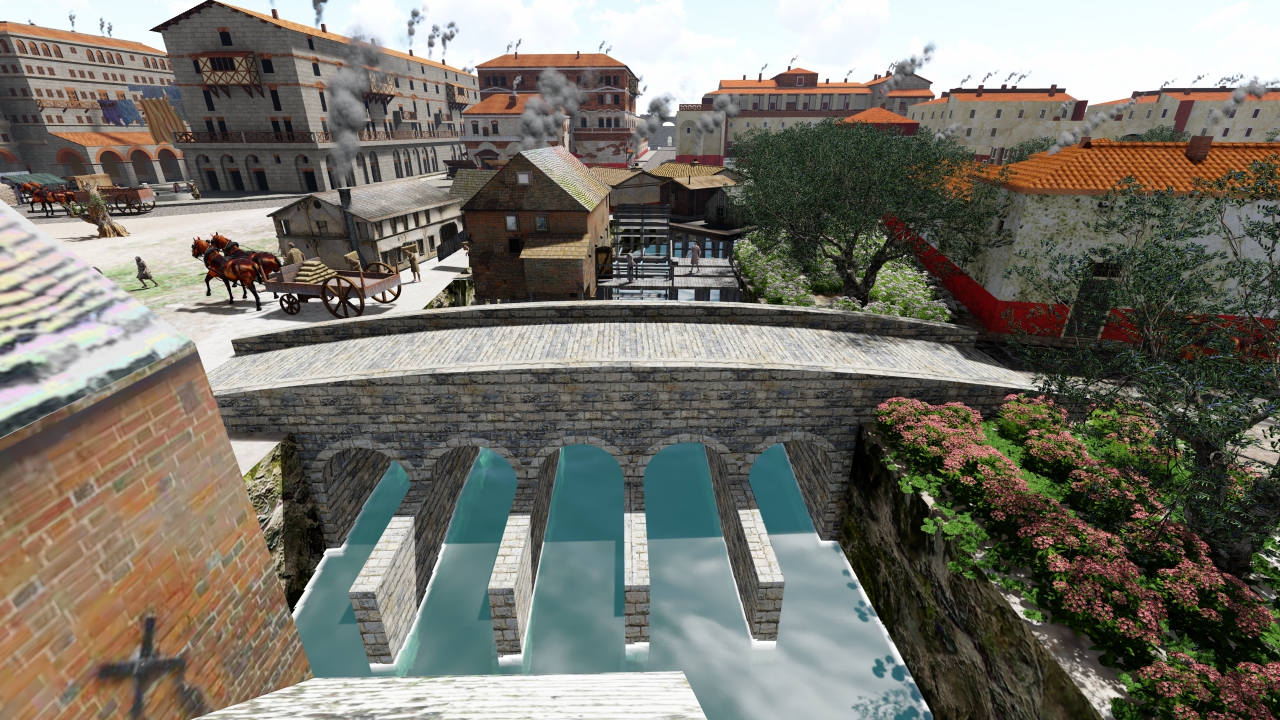
The peristyle was connected to all the rooms within the spa; this was most likely the atrium, while the building had a domus. As a rule, one entered the peristyle and from there into the frigidarium. Various bath aids were sold on the peristyle, from the latest baths to massage oils, various depilatory preparations, from razors to beeswax.
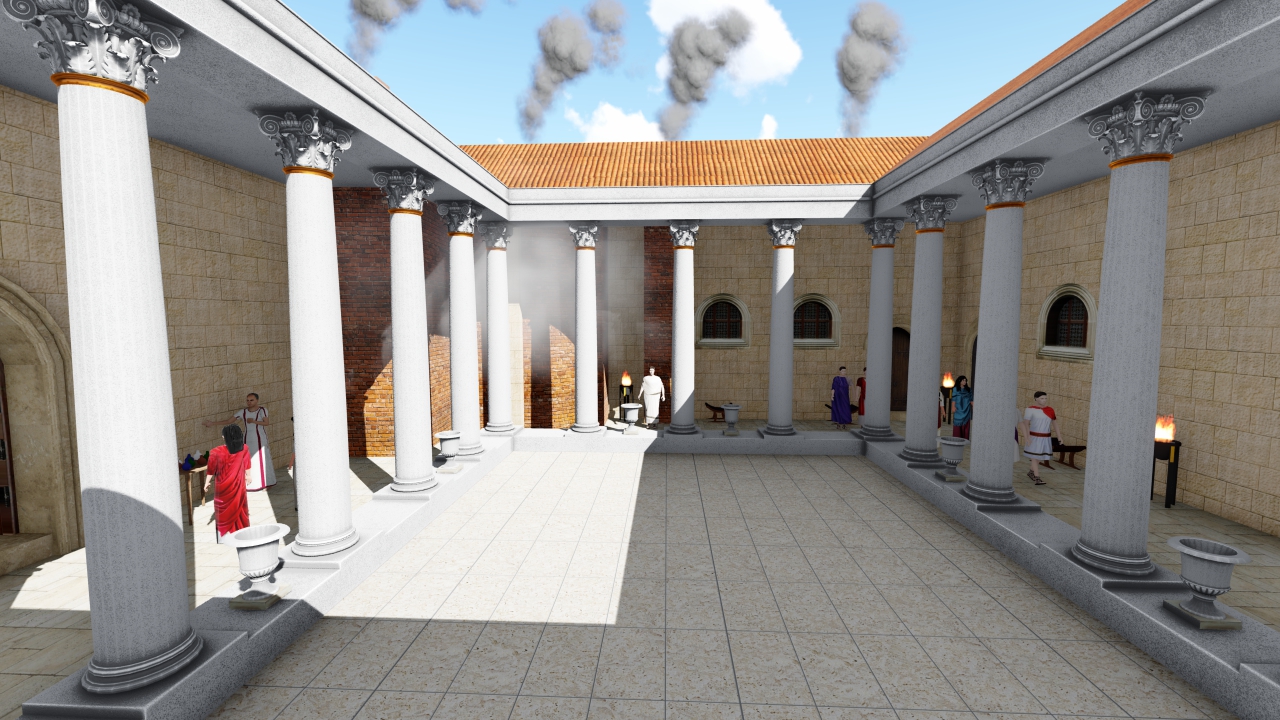
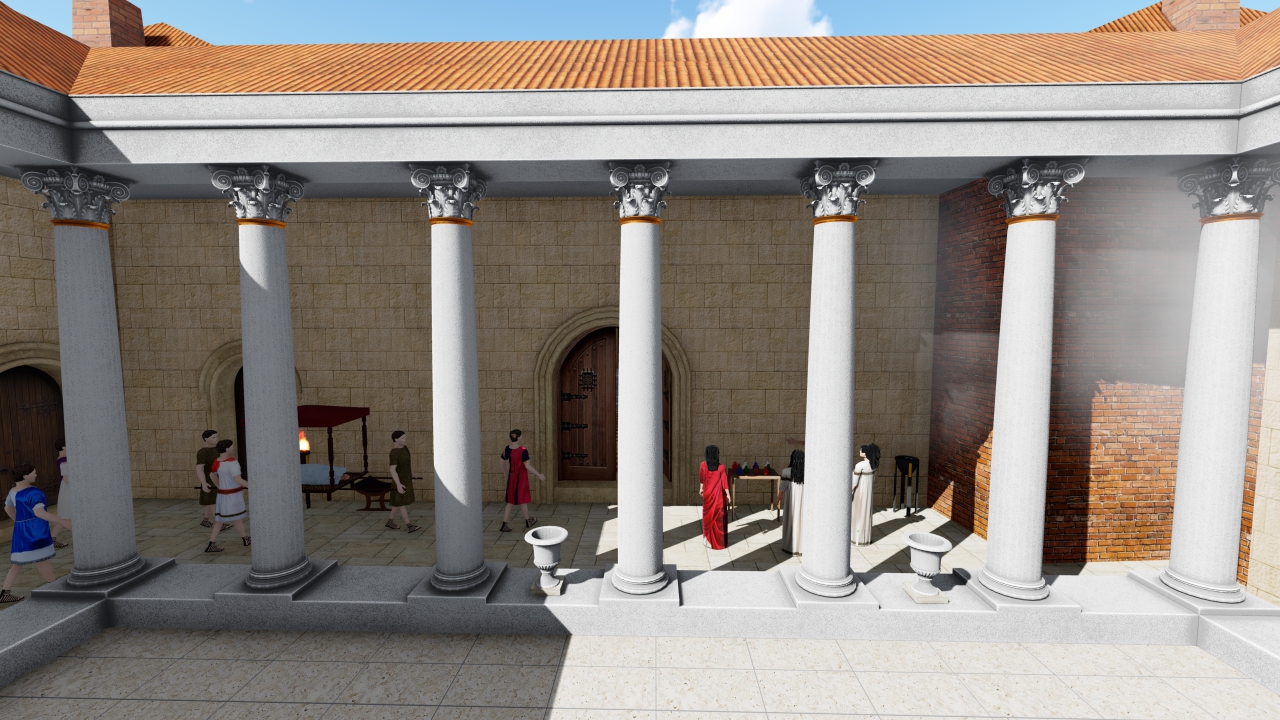
The frigidarium is a room with a pool where there is cold water, used before hot water and sauna, then at the end of all treatments to close the pores on the skin.

From the peristyle, one entered the frigidarium, from which one went to the left door to the locker room. After a bath in the cold pool, you'd go to the right door to the warm part of the spa. These baths were named 'balneum.'
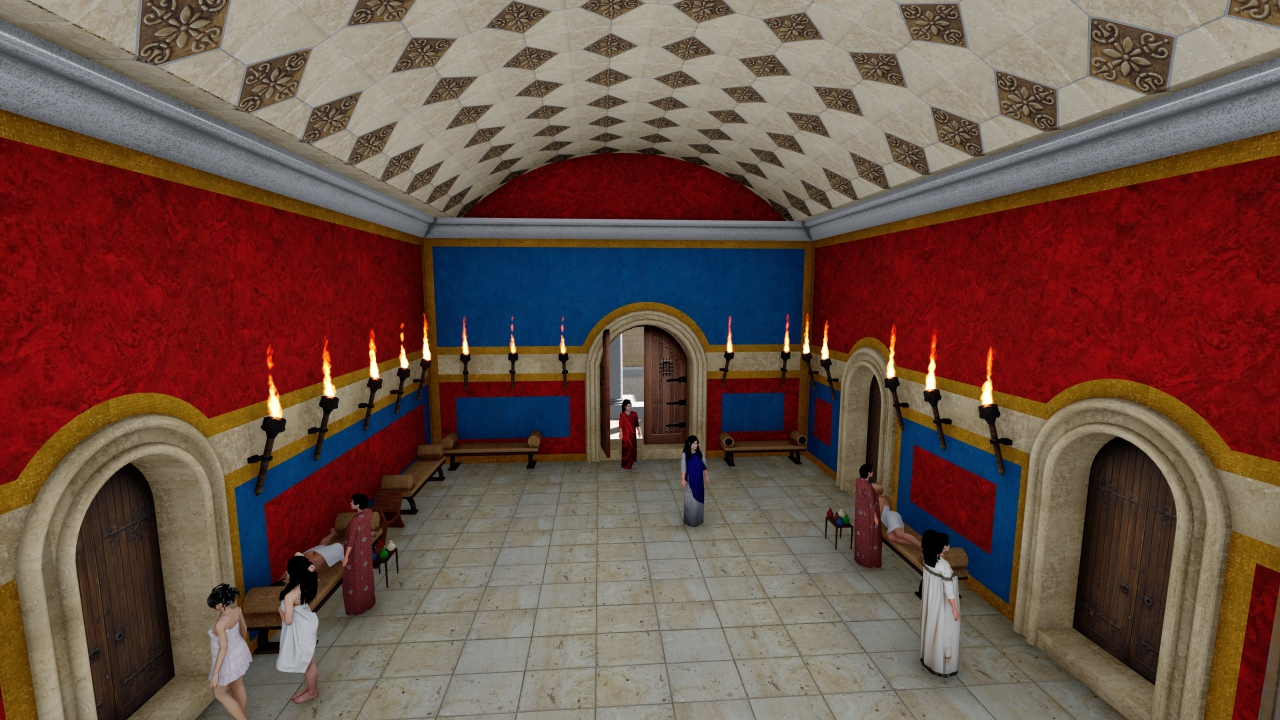
For more about lifestyle in Croatia, follow TCN's dedicated page.
Salona Archaeological Zone an Excellent Example of Modern Visual Communication
December 8, 2020 - One outstanding project in the Croatian Design Exhibition conceptualizes the Signage of the Salona Archaeological Zone.
HRTurizam reports that this year, at the Croatian Design Exhibition, works were presented in the professional and student section in eight categories: Visual Communication Design, Digital Media Design and Interaction Design, Packaging Design, Industrial / Product Design, Spatial and Graphic Interventions and Systems, Fashion and Clothing Design, Complete project/product and Concept/initiative /critical design.
The online exhibition and a new database of contemporary Croatian design were designed by Marina Jukić, programmed by Emanuel Blagonić, with Tina Ivezić and Matija Ferlin as the authors of the visual identity. A total of 497 works were submitted to the exhibition, of which 294 were selected by the Selection Committee. Since the first edition of the Croatian Design Exhibition held in 1999, this is the most extensive selection made as part of this biennial exhibition project.
In the professional section, 247 works were presented, while there were 47 in the student category. Visual Communications Design is, as in previous editions, the most comprehensive segment of the exhibition and includes 161 works.
Of all the excellent works, the Signage of the Salona Archaeological Zone gives a positive example of modern visual communication in historical and cultural sites and is related to the tourism sector. Bojan Sivački and Lana Vitas Gruić are responsible for the concept and design, and the work was awarded special recognition in the category of Spatial and Graphic Interventions and Systems.
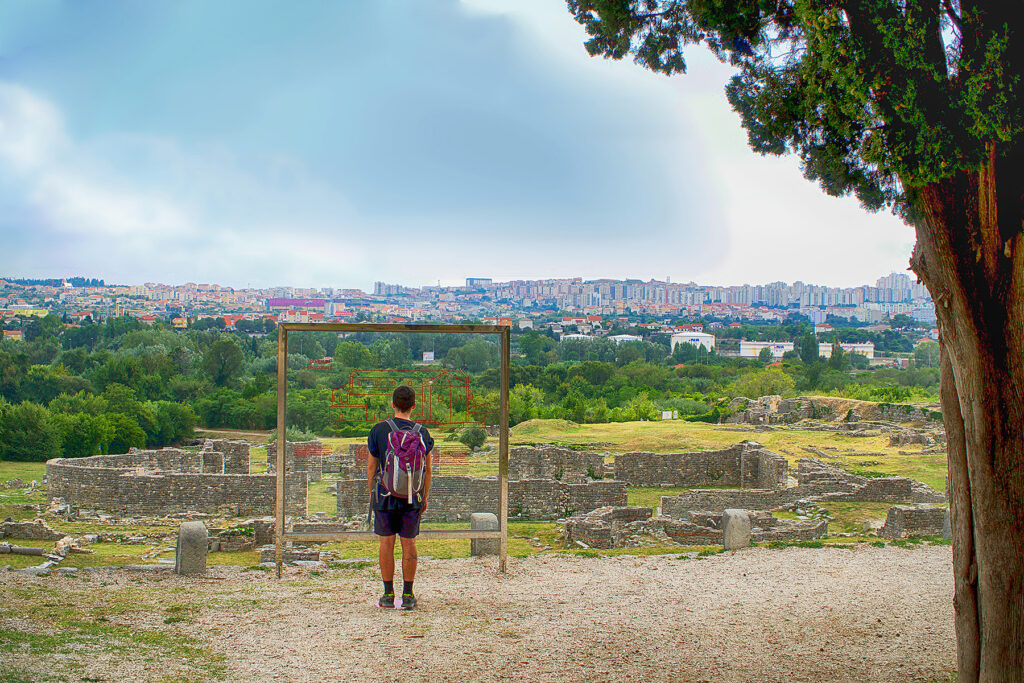
Bojan Sivački, Lana Vitas Gruić
The archeological complex of Salona is mostly dominated by ruins and flatness, so the visitor needs a lot of imagination to envisage the buildings that were once there. Inside the complex, a new, innovative system of signposts and interpretation boards has been installed, made of tempered glass that does not prevent the view of the environment, the project description points out.
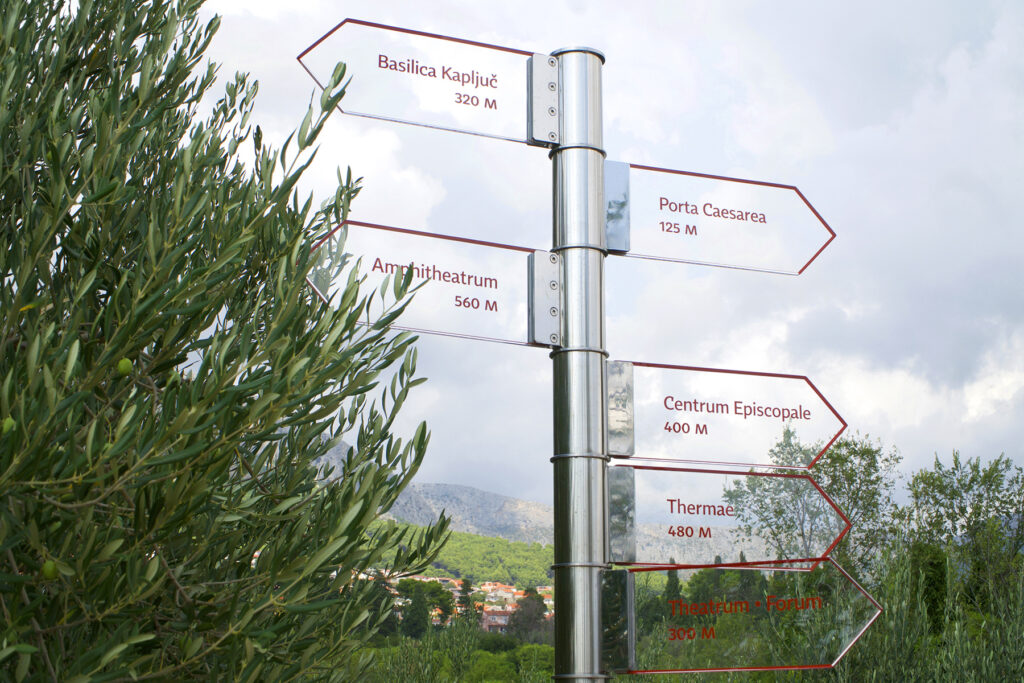
Bojan Sivački, Lana Vitas Gruić
A description is engraved in them from the back. The illustration drawn according to the authentic archeological-architectural reconstructions of the building, viewed from a specially marked point, upgrades the stone remains to the observer's former real appearance.
An incredibly imaginative way to navigate through these ancient ruins, bravo to Bojan Sivački and Lana Vitas Gruić!
You can read more about this project and others HERE.
To read more about lifestyle in Croatia, follow TCN's dedicated page.
An Interesting Tourist Product Covered in Garbage: Roman Road Near Trilj
August 20, 2020 - A few years ago, a Roman road was opened in the area of Samoleč, near Trilj. On that 500-meter-long road section, the remains of cobblestones are still visible in some places, as evidence of the intensive roadway that connected Salona with inland Dalmatia in ancient times.
This road heading was of great importance because it connected the Roman colonies and military camps with Pons Tiluri on the Cetina river.
Although a month and a half were spent picking up garbage and clearing bush before opening, this cultural asset soon became a new destination for an illegal landfill.
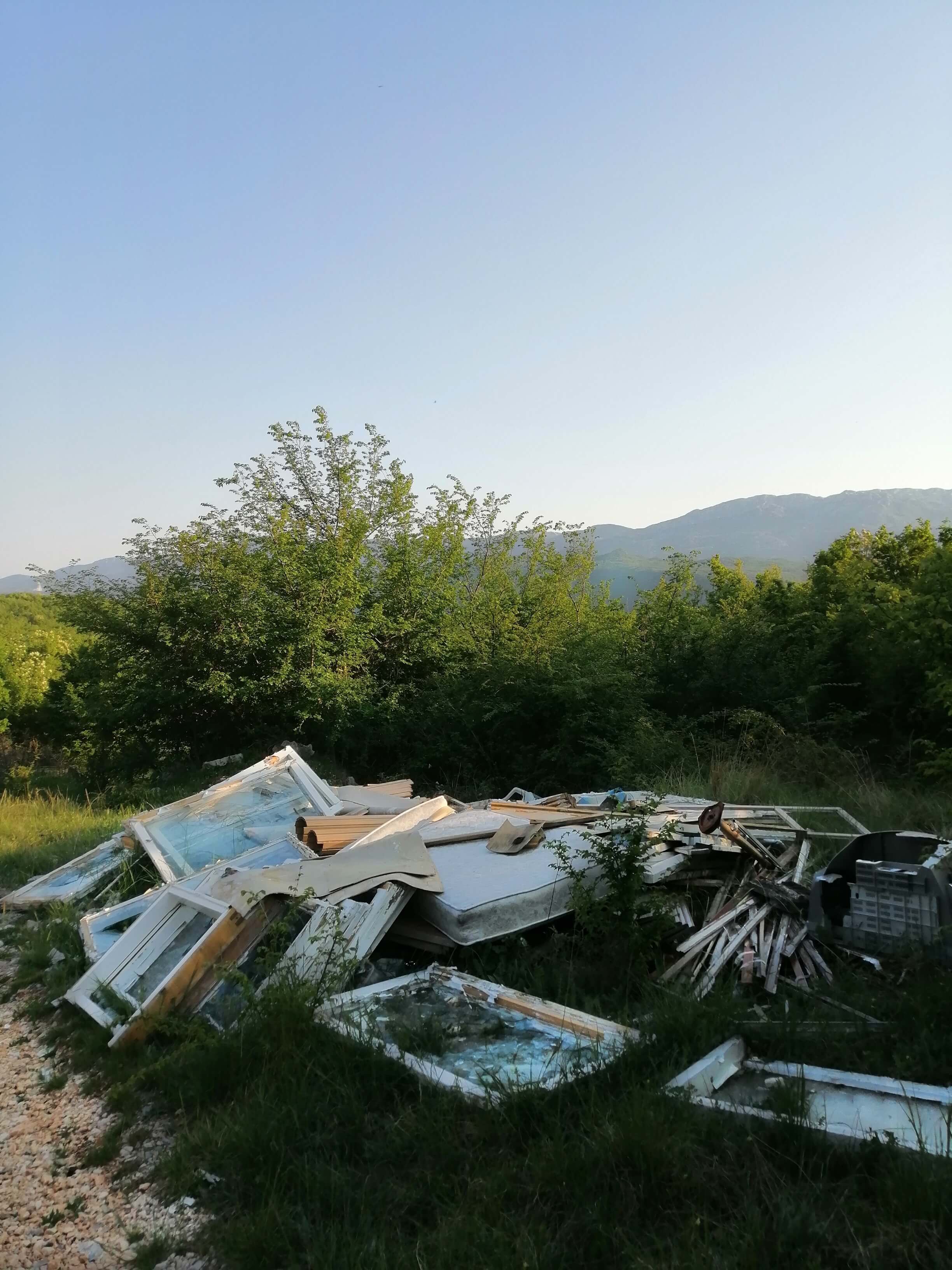
When opening the Roman road, the leader of the archeological project of the Roman road communication of Central Dalmatia, Lino Ursić, stressed the importance of developing archeological tourism as a subtype of cultural tourism.
„When we first saw the road, we were overjoyed because it is well preserved, we can see the paved road, curbs, walls, the remains of the track. It is a truly valuable archeological find. Trilj will have to become a destination of archeological-historical tourism because in that area we have a roman road, a Roman military camp, two medieval fortifications, and a quality museum that presents all this", Ursić stated.
It seems that this idea has fallen into oblivion, given that a good part of the site today is covered with old furniture, plastic waste, and glass.
In addition to being aesthetically unpleasing and certainly unattractive to visitors, it is dangerous for cattle coming here to graze and for children who could be injured.
Municipal services have been contacted regarding this problem, but guess what, nowhere to answer!
An interesting tourist product, a historical story of Roman history and roads, which would connect Split and Salona via Klis and Trilj, ended up in – garbage.
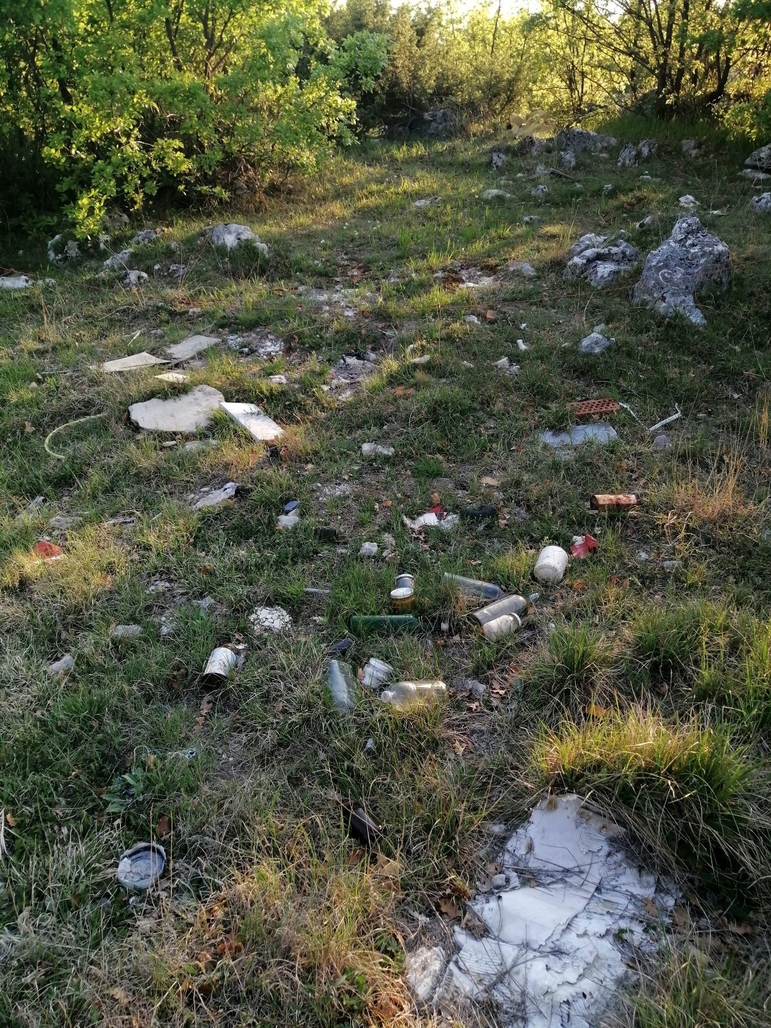
Wheelchair Travel in Split, Trogir, Krka, Brac, Salona and Ferry Crossings: a Recent Experience
October 25, 2017 - Travel information and advice for the wheelchair traveller can be hard to find in Croatia. An invaluable piece, with plenty of practical tips, from a Danish expat living in Split after the recent visit of her wheelchair-dependent father.
An Evening of Gladiators and Ancient Theater at Archaeological Site Salona!
The Tourist Board of Solin has organized a not to miss event this summer at the archaeological site in Salona!
From Solin to Sinj: "Salona 2016" Took Place for Automobiles and Oldtimers Over the Weekend
Over the weekend, about 50 participants joined the 9th international oldtimer automobile meeting "Salona 2016". Participants first gathered in Solin, then moved along to showcase their automobiles at the Sinj airport.
Gotta Catch 'Em All! A Pokémon GO Tour in Split
Want an opportunity to travel between the real and virtual world of Pokémon GO while discovering the rich historic offer of Split? Vetus Itinera knows just how to catch them all.
Romance in Salona Kicks Off Next Weekend
Running for its fifth consecutive year this year, "Romance in Salona" will kick off on Saturday, July 23rd.


